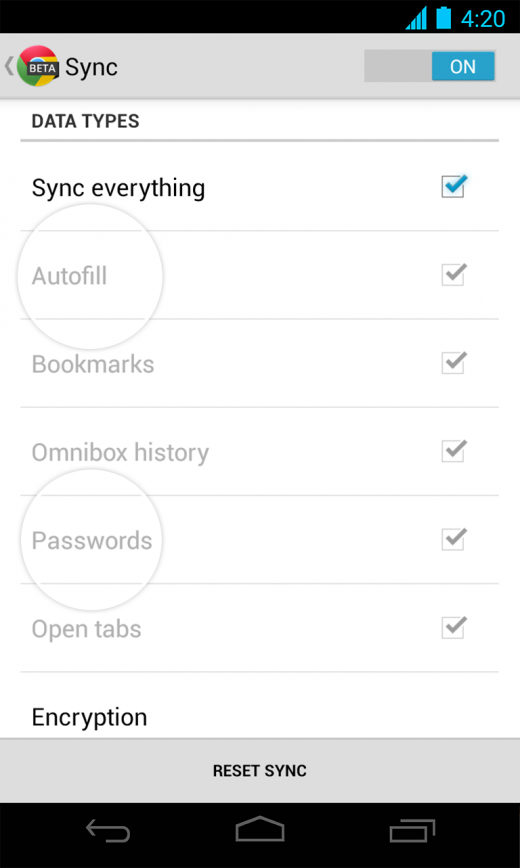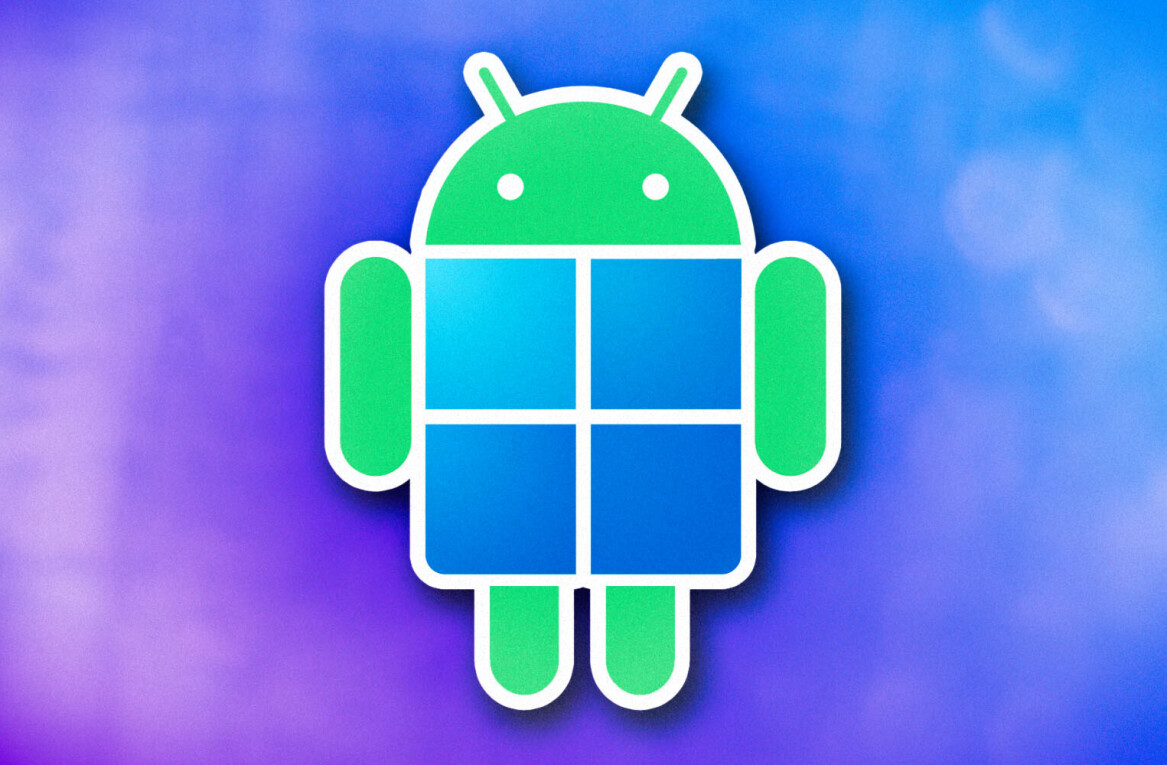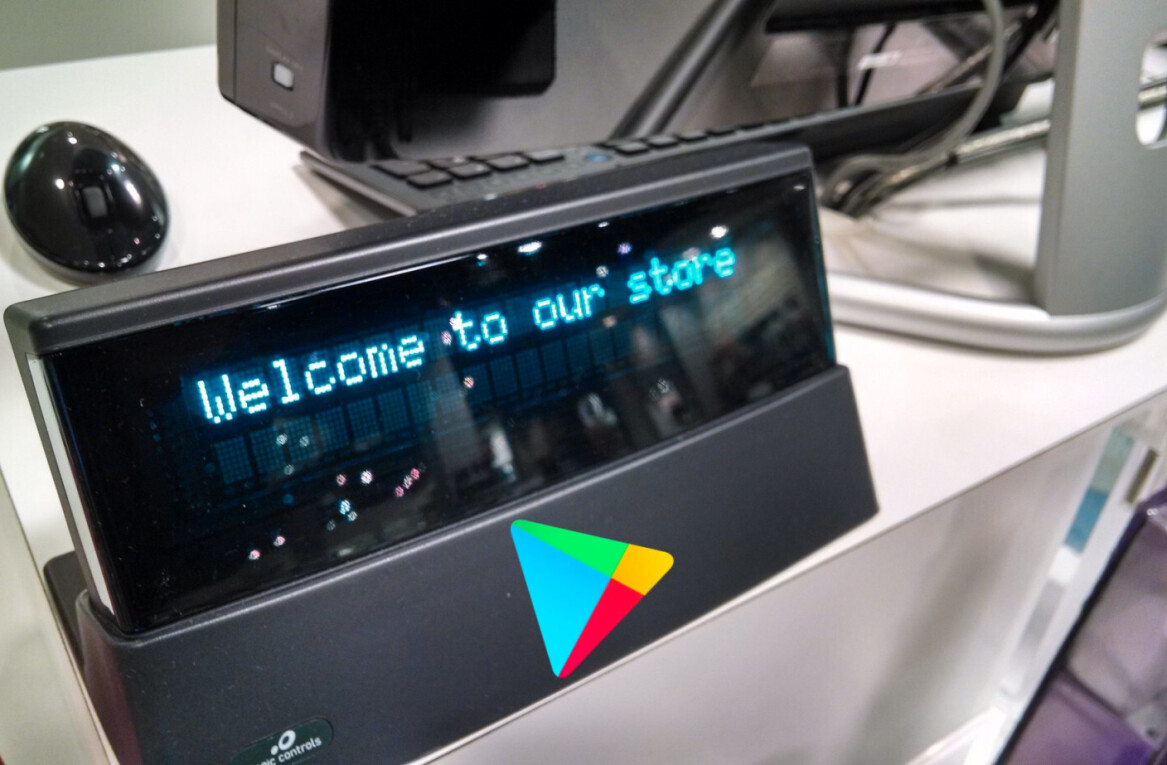
Less than a week after launching the stable version of Chrome 25 for Android, Google has released Chrome 26 beta for Android. Among the new features are autofill and password syncing, which should cut down on the amount of typing you have to do on your mobile device, as well as an experimental data compression feature. You can download version 26.0.1410.26 right now directly from Google Play (since this is a beta, it’s not available via search; you’ll need to use the link).
As Google explains, today’s beta release means you no longer have to worry about manually filling out Web forms and password prompts on your Android phone or tablet with the same information again and again. Both features were previously available when you’re signed in to Chrome on your desktop, allowing you to take your saved passwords and autofill entries across your computers and laptops, but now they’ve arrived on Google’s mobile operating system as well.
To use the syncing features, you’ll need to be on Chrome 26 or higher both on your desktop Chrome browser and the Android version of Chrome. The options can be turned on or off in the settings page:
The new data compression feature (enable it the under chrome://flags) is a whole different story. We first got wind it was coming to Android this past weekend when it made it into a new Chromium build. Now Google has christened it worthy for the official Chrome beta.
At the time, Google simply described it as such: “Reduce data consumption by loading optimized web pages via Google proxy servers.” We also noted that using less data could also translate into faster page loads.
Now Google has a lot more to say. The company claims it yields “substantial bandwidth savings” and confirmed it is powered by a connection to a SPDY proxy running on its servers, as we noted. Here’s what we said about the protocol earlier:
SPDY, which is not an acronym but just a short version for the word “speedy,” is a protocol developed primarily at Google to improve browsing by forcing SSL encryption for all sites and speeding up page loads. It does the latter via multiplexing (sending multiple streams of data over a single network connection), assigning high or low priorities to page resources being requested from a server, and compressing header information that accompanies communications for resource requests and responses. In other words, it’s part of Google’s broader strategy to speed up the Web.
Yet Google is doing much more than just relying on SPDY. The company is leveraging “content optimization performed by [its] open-source PageSpeed libraries, specifically tuned for Chrome Beta on Android.” In other words, Google is very focused on tuning the feature’s performance specifically to Android.
Google explains the browser-to-proxy connection is over SSL but only HTTP traffic is routed through and optimized by the proxy, so HTTPS requests will bypass it and continue to connect directly to the destination (some of you will remember Nokia wasn’t doing this).
DNS lookups are also performed by the proxy, instead of on the mobile device, to further cut down on required bandwidth. Additionally, the proxy performs “intelligent compression and minification” of HTML, JavaScript, and CSS files, removing unnecessary whitespace, comments, and other non-essential metadata for rendering the page.
Last but not least, the proxy optimizes and transcodes all images to the company’s WebP format, which requires fewer bytes than other popular formats, such as JPEG and PNG. Google justifies this by saying over 60 percent of the transferred bytes on an average page are images.
Chrome 26 is expected to be released next month. We’ll let you know when it’s out.
See also – Chrome 25 for Android arrives with performance tweaks, background playback, and auto-audio pausing and Google launches Chrome 26 beta with spell checking improvements, app launcher preview on Windows, and more
Image credit: T. Al Nakib
Get the TNW newsletter
Get the most important tech news in your inbox each week.





